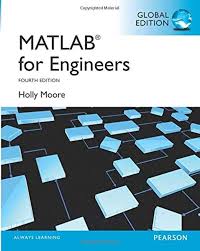Advancing Electrical and Computer Engineering through MATLAB, Simulink, VLSI, and IoT: Tools, Use Cases, and the Role of IAS-Research.com
Abstract
Electrical and computer engineering is undergoing a transformation driven by increasing system complexity, embedded intelligence, and interdisciplinary convergence. Tools like MATLAB and Simulink, combined with methodologies such as Model-Based Systems Engineering (MBSE) and VLSI Hardware-Software Codesign, are essential in navigating this new landscape. This paper provides a curated overview of essential books, training resources, and academic/industrial use cases across MATLAB, Simulink, VLSI design, IoT systems, and MBSE. It also outlines how IAS-Research.com enables students, educators, and organizations to integrate these technologies into research, product development, and innovation pipelines.
1. Introduction
The modern electrical and computer engineer is expected to model dynamic systems, simulate control strategies, design VLSI systems, deploy embedded software, and integrate IoT frameworks. Traditional teaching often treats these domains separately. However, professional engineering increasingly demands converged skillsets supported by simulation and modeling tools.
This paper aims to:
- Provide essential MATLAB/Simulink learning resources
- Showcase integrated ECE use cases including VLSI and IoT
- Describe the strategic role of IAS-Research.com in supporting education, research, and industrial projects
2. Recommended Learning Resources
2.1 Core MATLAB & Simulink Books
(Same as previous section)
2.2 Specialized Titles for VLSI, IoT, and MBSE
- Model-Based System Architecture – Tim Weilkiens, Jesko G. Lamm et al.
A foundational book for MBSE using SysML, compatible with Simulink's system-level modeling. - VLSI Design Methodologies for Digital and Analog Circuits – K. Lal Kishore
Introduces VLSI techniques, layout design, and simulation with MATLAB/Verilog interfaces. - Embedded Systems with ARM Cortex-M Microcontrollers in Assembly Language and C – Yifeng Zhu
A key reference for integrating embedded hardware-software design with MATLAB tools. - Internet of Things: Principles and Paradigms – Rajkumar Buyya et al.
Offers system-level insight into IoT communication, security, and data processing, which complements MATLAB and Simulink's IoT toolboxes.
3. Key Technologies and Use Cases
3.1 MATLAB/Simulink Core Use Cases
(As before: Signal Processing, Power Electronics, Control Systems, Automotive Design)
3.2 VLSI Design and Hardware-Software Codesign
a) Digital Filter Design & RTL Simulation
Design FIR filters in MATLAB, then translate to VHDL/Verilog using HDL Coder for FPGA deployment.
b) Hardware-Software Partitioning
Use Simulink to model system-level architecture and separate control logic (SW) from datapaths (HW) for SoC designs.
c) ASIC Prototyping
Simulate DSP cores or image processors with MATLAB and test on FPGA with HDL Verifier and Simulink Test.
d) Verification and Testbenches
Generate stimulus vectors from MATLAB and import into ModelSim or Vivado for functional simulation of RTL blocks.
3.3 IoT and Edge System Integration
a) Sensor Data Acquisition & Preprocessing
Use MATLAB with Raspberry Pi or Arduino to acquire data, filter signals, and visualize IoT sensor output.
b) Wireless Transmission and MQTT Modeling
Simulink can simulate MQTT communication protocols and cloud integration for smart monitoring systems.
c) Predictive Maintenance
Use Simulink and MATLAB to build edge-based fault detection algorithms for industrial IoT scenarios.
d) Smart Energy Metering
Design smart meters with power factor correction, load control logic, and real-time monitoring using Simulink + embedded boards.
3.4 Model-Based Systems Engineering (MBSE)
a) System-Level Design using SysML + Simulink
Create requirement diagrams in SysML and flow them into Simulink block diagrams for dynamic modeling.
b) Design Space Exploration
Simulink Design Optimization and MBSE approaches allow parameter sweep, trade-off studies, and control tuning.
c) Requirement Traceability & Verification
Using Simulink Requirements and Simulink Test, teams ensure full lifecycle validation — from system requirements to simulation and embedded deployment.
4. How IAS-Research.com Can Help
4.1 VLSI and Codesign Support
- RTL Modeling Services: IAS-Research.com offers RTL module design and testbench creation aligned with MATLAB-driven verification environments.
- HDL Coder & Simulation: Support in translating Simulink designs to synthesizable HDL code for FPGAs/ASICs.
- Hardware-in-the-Loop (HIL): Help deploying real-time test environments using FPGA/MCU boards integrated with Simulink Real-Time.
4.2 IoT and Embedded Systems Engineering
- IoT Prototyping Workshops: Sensor selection, real-time data logging with MATLAB + Arduino/RPi, cloud integration.
- Predictive Modeling: Data science support for analyzing IoT time-series data in MATLAB.
- Cyber-Physical Systems: End-to-end development of smart devices using model-based design and embedded C integration.
4.3 MBSE Enablement
- SysML + Simulink Integration: Assist organizations in transitioning from document-centric to model-centric design processes.
- Simulation-based Systems Engineering: Guide projects using MBSE workflows for safety-critical and performance-sensitive applications (automotive, aerospace, medical).
- Educational Programs: Training engineering colleges and SMEs in Simulink-based MBSE and digital twin workflows.
5. Summary of Use Cases and IAS-Research.com Support
|
Domain |
Use Case |
IAS-Research.com Role |
|---|---|---|
|
VLSI |
FIR filter RTL from MATLAB |
HDL Coder integration, FPGA testbench support |
|
IoT |
Smart HVAC system with sensor feedback |
MATLAB modeling, real-time data logging, dashboard |
|
MBSE |
Autonomous drone controller design |
SysML-Simulink modeling, simulation, code generation |
|
Power Electronics |
Grid-tied inverter with fault detection |
Simulink model tuning, HIL deployment |
|
Automotive |
EV Battery Management System (BMS) |
Algorithm modeling, embedded C coder support |
6. Conclusion
The integration of MATLAB and Simulink with VLSI design, IoT system engineering, and MBSE methodologies represents a paradigm shift in engineering education and product development. These tools foster a unified, simulation-driven design culture — essential for tackling the complexity of modern systems.
IAS-Research.com serves as a strategic partner by offering technical mentorship, prototyping services, MBSE integration, and training across academia and industry. Their support empowers students, startups, and research teams to translate theoretical knowledge into scalable, real-world innovations.
References
[1] Priemer, R. MATLAB for Electrical and Computer Engineering Students and Professionals.
[2] Bober, W. & Stevens, A. Numerical and Analytical Methods with MATLAB.
[3] K. Lal Kishore. VLSI Design Methodologies.
[4] Buyya, R. Internet of Things: Principles and Paradigms.
[5] Weilkiens, T. et al. Model-Based System Architecture.
[6] HDL Coder – MathWorks Documentation.
[7] MATLAB IoT Tutorials – https://www.mathworks.com/solutions/internet-of-things.html
[8] IAS-Research.com – Engineering Simulation & Embedded Systems Services.



